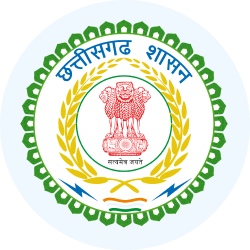Chhattisgarh: Fishing & Horticulture | Chhattisgarh State PSC (CGPSC) Preparation: All subjects - CGPSC (Chhattisgarh) PDF Download
Fisheries in Chhattisgarh

- Fisheries play a significant role in generating self-employment opportunities in rural areas of Chhattisgarh, contributing to the provision of nutritious food for the rural population.
- The fisheries sector has created employment for approximately 2.1 lakh individuals, many of whom belong to the weaker sections of society.
Available Water Resources
Chhattisgarh is endowed with abundant water resources that are crucial for the development of fisheries.
- Main Rivers: The major rivers, Mahanadi and Indravati, along with their tributaries, flow over 3,573 km across the state, offering substantial opportunities for fishery development activities.
- Rural Ponds and Irrigation Reservoirs: The state has 59,384 rural ponds covering 0.751 lakh hectares and 1,770 irrigation reservoirs covering 0.826 lakh hectares, totaling 1.577 lakh hectares of water area available for fisheries development as of 2013-14.
Fish Culture Development
Out of the total water resources available:
- Rural Pond Area: 0.68 lakh hectares
- Irrigation Reservoir Area: 0.800 lakh hectares
- Total Area: 1.483 lakh hectares have already been developed for fish culture by 2013-14.
Development Status of Water Areas

Fish Production and Productivity
Fisheries in Chhattisgarh are primarily culture-based, with the Major Carp fish group being predominant. The state's 59,384 ponds, covering 0.751 lakh hectares, serve as the primary foundation for culture fisheries, with 98% of this area being utilized.
- Fish Production Growth: The annual fish production witnessed an average growth of 83.2% from 2007-08 to 2013-14.
- Fish Production Statistics:
- Base Year (2007-08): 1.395 lakh tonnes
- Current Year (2013-14): 2.849 lakh tonnes
Resource-Wise Contribution to Fish Production
- Total Fish Production: 2.849 lakh tonnes
- Resource-wise Share:
- Ponds: 93.44%
- Reservoirs: 5.85%
- Rivers: 0.69%
Chhattisgarh ranks eighth in India for inland fish production. The state has seen significant improvements in per hectare yield from ponds. In 2001-02, the annual yield was 2,970 kg/hectare, which increased to 3,439 kg/hectare in 2013-14, surpassing the national average of 2,300 kg/hectare (2007-08). Several progressive pisciculturists in the state have achieved annual harvests of seven to eight tonnes of Indian major carps. The average production in reservoirs stands at 185 kg/hectare/year, exceeding the national average of 69 kg/hectare/year.
Extension Services
The Fisheries Department provides technical and other support to fish farmers through its field staff at the district and block levels. Additionally, the department organizes various programs for education and awareness among fish farmers, including:
- Training Programs: Conducted within the state.
- Study Tours: Organized out-of-state for exposure.
- Demonstration Units: Established to educate fish farmers.
Employment Generation
- Currently, approximately 2.1 lakh fish farmers in Chhattisgarh are engaged in fisheries activities, generating 142 lakh person-days of employment annually.
- The department aims to increase the number of fish farmers to 2.55 lakh, providing 178 lakh person-days of employment by the end of 2016-17.
Horticulture in Chhattisgarh

- Horticulture is a specialized branch of agriculture that focuses on the art, science, technology, and business of growing plants.
- It encompasses the cultivation of a wide range of plants, including medicinal plants, fruits, vegetables, nuts, seeds, herbs, sprouts, mushrooms, algae, flowers, seaweeds, and non-food crops like grass and ornamental trees and plants.
Importance of Horticulture in Chhattisgarh
The importance of horticulture in Chhattisgarh can be understood through the following five categories:
- Fruit Crops: Chhattisgarh primarily cultivates fruit crops such as Mango, Guava, Lime, Litchi, Cashew nut, and Sapota, with minor fruits like Custard Apple, Bael, Ber, and Amla also grown both as cultivated and wild crops. In 2015-2016, the total area under fruit cultivation was 2,39,676 hectares, yielding 23,28,811 metric tons. Mango can thrive across the state, while the northern hilly regions of Sarguja and Jashpur are ideal for Litchi production, and Cashew nut flourishes in the plateau areas of Bastar and Raigarh districts.
- Spices: The state grows a variety of spices, including Chili, Ginger, Garlic, Turmeric, Coriander, and Fenugreek. In 2015-2016, the total area devoted to spice cultivation was 93,662 hectares, producing 6,59,192 metric tons.
- Aromatic & Medicinal Plants: Chhattisgarh cultivates medicinal plants like Ashwagandha, Serpagandha, Satawar, Butch, Amla, and Tikhur, along with aromatic crops such as Lemongrass, Palmarosa, Jamarosa, Patchouli, and Eucalyptus citriodora, which are promoted for commercial farming. In 2015-2016, the area under these crops was 8,529 hectares, with a production of 59,972 metric tons.
- Flowers: Floriculture is still developing in the state, but with increasing demand for flowers, commercial floriculture is being encouraged. Flowers like Marigold, Tuberose, Gladiolus, Roses, Gaillardia, Chrysanthemum, and Orchids can be grown with minimal care. As of 2015-2016, the area under floriculture was approximately 11,000 hectares, producing around 53,000 metric tons.
- Vegetables: A wide range of vegetables, including Cucurbits, Beans, Cabbage, and Cauliflower, are grown successfully in the state. In 2015-2016, vegetable cultivation covered 4,38,849 hectares, with a total production of 60,61,801 metric tons.
FAQs on Chhattisgarh: Fishing & Horticulture - Chhattisgarh State PSC (CGPSC) Preparation: All subjects - CGPSC (Chhattisgarh)
| 1. How can I apply for the CGPSC Fishing exam? |  |
| 2. What is the eligibility criteria for the CGPSC Fishing exam? |  |
| 3. What is the exam pattern for the CGPSC Fishing exam? |  |
| 4. How can I prepare for the CGPSC Fishing exam? |  |
| 5. What is the selection process for the CGPSC Fishing exam? |  |
|
65 docs
|

|
Explore Courses for CGPSC (Chhattisgarh) exam
|

|
















